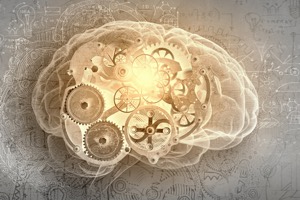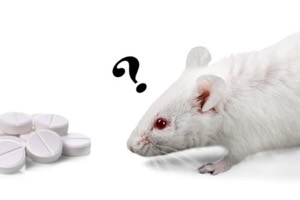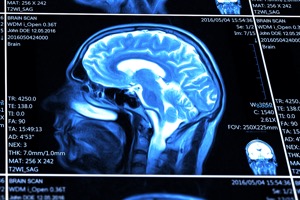The Science of MDMA (Molly, ecstasy)
“(with 120 mg) As the material came on I felt that I was being enveloped, and my attention had to be directed to it. I became quite fearful, and my face felt cold and ashen. I felt that I wanted to go back, but I knew there was no turning back. Then the fear started to leave me, and I could try taking little baby steps, like taking first steps after being reborn. The woodpile is so beautiful, about all the joy and beauty that I can stand. I am afraid to turn around and face the mountains, for fear they will overpower me. But I did look, and I am astounded. Everyone must get to experience a profound state like this. I feel totally peaceful. I have lived all my life to get here, and I feel I have come home. I am complete.”
– description of an MDMA experience, from “PIHKAL”, by Ann and Alexander Shulgin.
MDMA Technical Overview
MDMA (Molly, ecstasy) is racemic (+/-) 3,4-methylenedioxymethamphetamine, (MDMA), almost always encountered as the hydrochloride salt. MDMA’s qualitatively unusual effects have led to its categorization as an ‘entactogen’…a small group of drugs possessing stimulant and mild ‘psychedelic’ properties[1]. MDMA is a Schedule 1 drug in the US (illegal to make, sell or have without a government permit.)

DISTRIBUTION: MDMA is usually found in the form of small pressed pills, which come in a near-infinite variety of colors and logos. MDMA in gel-caps is also somewhat common. MDMA as loose powder was once rare, but seems to be appearing more often as users seek material that is easy to weigh out known doses from or snort and is perceived as being of more reliable purity than pills. In the early 2000s, pills were reported to contain on average about 70 mg of MDMA, a decline from about 100 mg in the mid-1990s. In 2016, extraordinarily strong pills are regularly seen on the market, sometimes coming close to 300 mg of MDMA (a potentially dangerous dose.) Even within a batch of pills the strength may vary significantly due to inadequate homogenization of pressing mixtures. Black market MDMA pills often contain cheaper substitutes either by themselves or in combination, such as caffeine, ephedra, dextromethorphan (DXM), amphetamine, methamphetamine, piperazines, etc., or may contain one of the more common homologues of MDMA such as 3,4-methylenedioxyamphetamine (MDA) or N-ethyl MDA (MDEA).[2] During at least two periods in the US a particularly dangerous drug called PMA (para-methoxyamphetamine) has appeared on the market in quantity as ‘ecstasy,’ killing a number of users on each occasion.[3] The MDMA supply seems to be more reliable at high levels of the trade–the DEA has reported that 80% of seized ‘ecstasy’ pills contain MDMA (about 10% also contained another amphetamine)[4], implying that the bulk of the fraud and substitution is occurring at the level of dealers and small wholesalers.
Most of the US supply of MDMA is produced in western Europe, particularly the Netherlands, [5] although there is also believed to be significant production in Canada. There is remarkably little evidence of active production in the US, with seizures of labs generally being rare and small in scale. It has been suggested by the DEA and the rumourmill that MDMA production has also increased in Mexico as local organized crime groups seek a greater share of the market, which may further reduce prices and increase availability. (Retail prices in the US are typically $10-$20 a pill in small quantities, with large regional price variations depending on supply and demand.)
ADMINISTRATION AND DOSAGE: MDMA is almost always taken orally, although intranasal use (‘snorting’) enjoys some popularity. There have also been a small number of reports of rectal administration.[6] Injection is virtually unheard of, with a handful of known user reports describing intravenously injected MDMA as ‘harsh’, too speedy, and generally unpleasant.[7] More recently there has been a positive user report of intramuscular injection. Typically human recreational doses are on the order of 1-2 mg/kg (orally). An additional 0.5-1 mg/kg can be taken at about the one hour point of the ‘trip’ to extend the experience by another hour or so beyond the base 3-5 hour period of acute affects. Women show a stronger subjective response then men at the same dosage. [8]
PHARMACOLOGY: MDMA releases monoamine neurotransmitters within the brain via transporter mediated exchange.[9] The principle source of MDMA’s effect is serotonin release, but dopamine and norepinephrine are also significant contributors to the overall effect. [10] MDMA is a monoamine oxidase inhibitor of modest but significant potency, preferentially inhibiting MAO-A. [11] MDMA has a strong affinity for serotonin, dopamine, and norepinephrine transporter proteins, but does not have significant receptor binding affinities. The S(+) isomer is a potent dopamine reuptake inhibitor/releaser as well as a serotonin releaser, while the R(-) isomer is essentially only a serotonin releaser.[12] However, due to the somewhat greater serotonin releasing potency of the R(-) isomer and the synergistic role of serotonin release in boosting dopamine production, racemic MDMA is almost equipotent to S(+) MDMA in subjective ‘strength.’ [13] METABOLISM: Metabolic attack in the body appears to consist primarily of cleavage of the methylenedioxy ring (with subsequent methylation and/or demethylation of the resulting hydroxy/methoxy groups) with minor metabolism via N-demethylation. In the liver, MDMA is primarily metabolized by the cytochrome P450 2D6 family of isozymes via attack on the methylenedioxy ring (2D6 does not N-demethylate MDMA.)[15] CYP1A2 is a minor contributor to methelenedioxy ring cleavage, while CYP2B6 appears to be the principle source of hepatic N-demethylation.[71]
At very low doses, as much as 2/3rds of a recreational dose of MDMA is excreted unchanged in the urine.[14] At higher (more typical ‘recreational’ doses) as little as 26% is excreted in the urine unchanged, with only about 1% excreted as the N-desmethyl form (MDA) and 23% excreted as the methylenedioxy ring-cleaved HMMA (hydroxy/methoxymethamphetamine.)[72]
At recreational doses MDMA has a plasma half-life of approximately 8-9 hours [16] (however, the subjective ‘high’ only lasts 3-5 hours.) Peak plasma concentrations are nonlinear to dosage, becoming disproportionately elevated with larger doses. Peak plasma concentrations of a moderate recreational dose of MDMA (1.5 mg/kg) reached an average of 0.331 ng/ml at about two hours after oral administration in humans. [17] The S(+) isomer undergoes ether ring cleavage and N-demethylation at a significantly greater rate than the R(-) isomer. [18]

(Levels of the stereoisomers of MDMA and metabolically formed MDA in plasma after the administration of a single 40 mg dose to adult male humans.[73])
CONTRAINDICATIONS: MDMA should not be used in combination with MAOIs or drugs that strongly inhibit CYP2D6 isozyme function (a near-fatal interaction with the protease inhibitor Ritanovir has been claimed.)[19] ‘Slow metabolizers’ (CYP2D6 deficient people) do not appear to be at a significantly greater risk of death from MDMA use (based on their absence among genotyped victims.)[20] MDMA should never be combined with other stimulants such as amphetamine due to the increased risk of heat stroke and hypertensive crisis. As a strong stimulant, MDMA should not be used by people that have compromised cardiovascular systems (heart disease, hypertension, etc.) Successful use has been reported by insulin-dependent diabetics, but is inherently more dangerous (regular blood sugar checks should be made.) The risk posed to asthmatics is unclear. Although there has been one reported death, MDMA has vasoconstrictive effects similar to those produced by epinephrine ‘rescue’ inhalers; several people with severe asthma have reported no difficulties while taking MDMA in spite of engaging in levels of activity they would normally be incapable of. MDMA is not definitively known to be a mutagen or teratogen, but has been associated with an increased risk of birth defects in humans[74] and is associated with lower birth weight and smaller litter sizes when given to pregnant rats.[21] As such, MDMA should not be used by women who are or may be pregnant or are nursing (the drug can be excreted in breast milk.) Serotonin reuptake inhibitors can partially to almost fully block the effects of MDMA in humans (by about 60-70%) [22], but the combination doesn’t appear to be inherently dangerous. As MDMA is acutely intoxicating and can affect judgment and concentration, the user should not drive, operate heavy machinery, etc. from the time the drug is taken until sober again (and even then driving should ideally be avoided due to fatigue.)
PHYSIOLOGICAL EFFECTS: MDMA use acutely causes the release of the anti-diuretic hormone arginine vasopressin[23], as well as a transient suppression of the immune system (roughly comparable to the effect of binge drinking.)[24] Pulse and blood pressure are increased significantly (at 1.5 mg/kg, an average increase in pulse of 28 beats and BP increases of +25/+7, which were more pronounced in male subjects.) Not surprisingly, cardiac output and myocardial oxygen consumption are increased as well.[25]
MDMA produces little or no hyperthermic response in humans at all doses tested (up to 2.0 mg/kg) under laboratory conditions (no change [26] or increases of less than half a degree C [27] were typical.) At higher doses, MDMA produces remarkably dilated (but still light-responsive) pupils. Common acute side effects include dry mouth, reduced sense of balance/coordination, bruxism, ‘sexual side effects’ in males, and difficulty in urinating.[28] During drug onset nausea and vomiting infrequently occurs; a continuation or reemergence of nausea after onset is relatively rare, and may be associated with excessive fluid intake or disruption of balance (‘sea sickness’.)
PSYCHOLOGICAL EFFECTS: After drug administration, the first clear indications of activity usually appear in about 30-45 minutes, although as little as 20 minutes or as long as an hour is not uncommon. During onset the user may feel warm or chilled, have a ‘tingling’ sensation of the skin, and, as full onset nears, feel small ‘waves’ of pleasure/energy flowing through them. Once the drug has taken full effect, hyperactivity and a powerful central analgesic effect is seen, as is an interesting (and very strong) non-sedating anxiolytic effect. In short, the user becomes energized, euphoric, very talkative, and able to discuss virtually any topic without fear. This remarkable, predictably produced mental state of talkativeness, trust, and deep compassion for self led to MDMA’s initial use (pre-prohibition) by various mental health professionals with many positive anecdotal reports.[29] Secondary effects include enhanced appreciation of the senses, including sight, taste, touch, music appreciation, etc. The user is usually ‘overly focused’, becoming easily bored, easily distracted, and forgetful. As having somebody else to talk to (at great length and speed) is one of the preferred activities of a person under the influence of MDMA, other people can often easily choose the topic of discussion by simple suggestion (so long as the user finds the new suggestion interesting.) The user can quickly and completely change their line of thought, often promptly ‘forgetting’ what they had just been talking about at higher doses.

The acute ‘high’ lasts for approximately 3-5 hours (depending on dosage) with a peak of subjective effects at about 90-120 minutes.[30] It’s common for users to describe a ‘plateau’ period in drug effects, however the research suggests a smooth curve of rising then falling effects. (The top line of this graph is for a dose of 1.5 mg/kg, the middle is for 0.5 mg/kg, the bottom is the control group.) Peak subjective intoxication correlates with peak MDMA plasma levels.
As the user ‘comes down’ they usually feel fatigued and become stimulus-avoidant–their foremost interest often becomes finding a quiet place to relax and rest. To combat residual stimulant effects, marijuana and benzodiazepines are often used. Disturbingly, there have been suggestions of a trend towards heroin use for this function. The ‘hangover’ often lasts 24-48 hours, and is characterized by lack of motivation, focus, and loss of appetite. An atypical but still common form of ‘hangover’ is the well-documented ‘Tuesday Blues’ phenomenon, where the user feels well during the first few days after use, then becomes irritable or depressed on about the third day. (Government web sites like to call this ‘suicide tuesdays’, but I’m unaware of a single case of a user attempting suicide under these conditions.) Some users have little ‘hangover’ of any sort.
In spite of its popular description as a “hallucinogenic amphetamine”, MDMA does not normally produce any sort of hallucination, although minor visual effects may be observed (‘halos’ and short tracers on lights are particularly common, and may be more the result of pupil dilation than neurological effects.) Although dopamine and norepinephrine release are important contributors to the total effect, the primary source of MDMA’s subjective qualities seems to be serotonin, seperating it at least subjectively from traditional amphetamines[31].
‘Bad trips,’ although uncommon, can occur with MDMA as with virtually any psychoactive drug. These events normally involve anxiety, often severe, with a feeling that something very bad is happening or about to happen. Based on anecdotal reports I believe these events are due to either the user not being psychologically prepared for the drug’s effect and attempting to suppress it rather than embrace it, or an environment that is threatening to the user (amplified by the drug), or, in rare cases, true overdose. Within the setting of psychotherapy (or when otherwise acting as a ‘sitter’) it may be beneficial to simply encourage a user who is fighting the onset of effects to ‘let go’.
Under the influence, hostility and aggression become all but impossible, although the user could still respond with violence if they felt it was necessary to protect themselves or others. Due to the fundamentally pro-social and contented nature of the MDMA high, it isn’t associated with the fighting, belligerence, rape, robbery and other violent crimes committed by users of alcohol and (to a lesser extent) stimulants such as cocaine and amphetamine. The qualitative differences between MDMA and alcohol intoxication have led to a certain friction between some MDMA users and peple who are drunk.
MDMA has gained a small reputation as a ‘sex drug’. This may not be entirely deserved. While a person who is high is more receptive to sexual overtures (probably for more emotional reasons than physical desire) on the average there is not an increase in the likelihood of them initiating sexual activity themselves. [32] Since MDMA tends to temporarily cause impotence and difficulty reaching orgasm in men (but not in women), those simply looking for an aphrodisiac may be disappointed.
DEPENDENCE: From observations of the real world user population, we know MDMA use has a low occurrence of dependence…for many years addicts were unheard of. This is rather surprising in light of how tremendously enjoyable the high can be, as well as the involvement of dopamine in its effects. But…there are good reasons for it.
First, the MDMA high is fundamentally a serotonergic event, and serotonin levels, depleted by their massive release, do not rebound as quickly as dopamine can. Even the dopaminergic component is partially serotonin-dependent, being supported by the increase in dopamine production stimulated by serotonin release. [33] Since serotonin receptors are also downregulated in response to high activation levels, [34] MDMA becomes largely ineffective with frequent use. In one experiment, full extinction of subjective response to MDMA was produced within a week from once-daily 150 mg doses.[35]
The severity and duration of the ‘hangover’ also greatly increases with frequent use. Over the long term, usage rates of much more than about once a month will predictably reduce user response and increase the severity of side effects.
A less obvious anti-abuse effect of MDMA is its tendency to provoke the user to honestly examine their own life and behavior, primarily by suppressing emotional defense mechanisms such as denial (as opposed to drugs like opiates and alcohol which if anything assist denial.)
Still, dependence can occur…in a few extreme examples, usage rates of over a hundred pills a month have been documented.[36] Recent animal research suggests a strong role for social isolation in the development of MDMA dependency. [37] There is a shortage of actual field research on MDMA’s potential for addiction, although what does exist suggests a low potential for abuse; in one study of drug users in England, MDMA produced Severity of Dependence scores of less than half that of marijuana.[38] A large epidemiological study in Europe found a lifetime rate of abuse (by DSM-IV standard) among MDMA users of approx. 20%.[70] The same study claimed to find a lifetime rate of dependence (DSM-IV) of about 10%, but on a number of occasions I’ve seen researchers mistaking the MDMA ‘hangover’ for drug withdrawal; the actual number may be lower.
In cases when dependence does occur, doctors have an excellent tool at their disposal: The SSRIs. By supporting the serotonin system, an SSRI can often provide the relief from anxiety/depression that the patient may be seeking through their MDMA use. By blockading the serotonin transporters, SSRIs also greatly reduce the user’s responsiveness to MDMA, which requires access to the transporters in order to achieve its signature massive efflux of serotonin. Thus, the dependent user can both be maintained and discouraged from further use with relatively safe, well understood medications.
ADVERSE EVENTS: For a drug that is of uncontrolled purity and strength and comes with no medical advice or warnings for the user, death from MDMA is rare–less than a hundred deaths a year in the US have MDMA present, and only a handfull involved only MDMA.[39] “MDMA-present” drug deaths occur at a rate of aproximately 2-3 users per 100,000 users/year. (By way of contrast, cigarettes have a US death rate on the order of 400 deaths per 100,000 users/year, making the Marlboro Man hundreds of times more likely to kill his customers than the local ecstasy dealer.) Emergency department visits related to drugs that were sold as “ecstasy” occurred at a rate of approximately 1 per 600 users (5,542 total cases) in 2001. (Visit Statistics for additional figures and charts.) [40] Most cases also involve other drugs, usually alcohol[40], and present only minor symptoms.[41] Both numbers could no doubt be reduced further with honest education of drug users regarding safe use instead of the ‘abstinence only’ approach demanded by prohibitionists (a debate strikingly similar to the sex education debates that set the teaching of disease and pregnancy prevention methods against abstinance-only messages.) Deaths in the absence of aggravating factors (simple overdose) are all but unheard of. The LD50 of MDMA ranges from about 100-300 mg/kg in assorted rodents.[42] The single-dose LD50 in humans can only be guessed at, but may be on the order of 10-20 mg/kg (oral.) One recent press report claims a ten year-old girl died after taking at least five ‘ecstasy’ tablets. Assuming the girl weighed about 40 kg (88 pounds) and the pills contained about 70 mg of MDMA each (and no other drugs), she died from a dose of roughly 9 mg/kg.
The most common causes of death and injury are complications of malignant hyperthermia, usually in association with ‘raves’ (which often involve all-night marathon dancing) and dancing at conventional clubs. Potential overexertion/hyperthermia-related events include disseminated intravascular coagulation, rhabdomyolysis, hepatoxicity, and renal failure[43]. These risks can be greatly increased by mixing drugs, particularly other stimulants.
A less obvious (but also somewhat common) cause of MDMA-related death is hyponaetremia (‘water intoxication’). Sadly, these cases appear to be the direct result of public awareness of heatstroke-related deaths leading some users to consume large amounts of water (almost three gallons in one case[44]) out of fear. As blood sodium concentrations are reduced by increasing blood volume and the leeching of sodium into the water-engorged gut the difference in osmotic pressure causes body tissues, including the brain, to take on water and swell.[45] For most organs this isn’t a problem, but as the brain is encased in the skull, the swelling can lead to increased intracranial pressure, sometimes culminating in the crushing of the brain stem/cerebral hemorrhage. On one occasion PBS’s “News Hour” claimed that these cases were due to MDMA causing “a terrible thirst,” which is incorrect: While MDMA (like many serotonergic and stimulant drugs) can cause a dry mouth, it’s hardly of the magnitude to explain these cases (which were unheard of until the popular awareness of heatstroke deaths.)
A final group of MDMA-related deaths could be described as being due to aggravation of underlying cardiovascular problems, such as heart disease. One particularly dramatic recent case involved a young woman who died of a cerebral hemorrhage after taking a single MDMA pill.[46] Her death was portrayed by much of the press, and later, by a national ad campaign from NIDA, as a wholly random ‘ecstasy death’, which is not rational: The moderate increases in blood pressure from MDMA are not sufficient to burst blood vessels in an otherwise healthy individual, suggesting a serious preexisting (if undiagnosed) cardiovascular problem. While the death was tragic, it is dishonest to represent the case simply as something that could happen to anybody. There also remains the possibility that this was a case of hyponatremia; the authorities have absolutely refused to give details of the case.
‘Misadventure’ deaths are strikingly rare for an intoxicating drug, which is probably explained by the relatively high self-awareness of intoxication associated with MDMA. Where an alcohol user is usually unaware of the full extent of their intoxication, the MDMA user is often acutely aware of it, to the point of outright paranoia of potential physical dangers. It’s unusual for a person high on MDMA to choose to drive or undertake any other activity that was obviously potentially physically dangerous. They are, however, more likely to ignore less obvious dangers such as unprotected sex. (Of particular concern, mixing MDMA with alcohol increases intoxication while reducing self-awareness of the extent of intoxication, making the combination a likely risk factor for drunken driving, etc. [47] There have also been a number of striking anecdotal reports of people who, after mixing liberal amounts of alcohol with MDMA, wake up the next day with no memory of what happened and stories from their friends of bizarre, irrational behavior. It is possible that the stimulant qualities of MDMA can keep a drinker going past the point where alcohol intoxication would normally cause loss of consciousness.)
NEUROTOXICITY: The most sensationalistic and controversial issue regarding MDMA is claims of neurotoxicity in humans. At high doses in animals (mice, rats, monkeys, and baboons) a profound loss of serotonin axons (and dopamine axons in some species/dosing regimens) is produced.[48] The cell body itself is not destroyed. How or why MDMA was able to produce this distinctive pattern of damage has been the subject of a considerable amount of speculation, with a number of reasonable theories proposed, none of which quite fit all the experimental evidence. Recent research has compellingly tied together much of the disparate evidence by demonstrating that the key factor in MDMA neurotoxicity was hyperthermia.[49] Animals given MDMA do not normally suffer neurotoxicity if hyperthermia is avoided, which can be accomplished by any number of means, from sedation, restraint, or even simply placing them in a cool room. The exact mechanism of toxicity is still not known, but the most likely route is the metabolic breakdown of MDMA or a metabolite of MDMA within the axon producing reactive oxygen species (such as superoxide), that, if not neutralized by endogenous defenses (superoxide dismutase, etc.), will readily react with the local antioxidant supply, then, as antioxidant levels drop, damage the axon itself. It seems likely that the role of hyperthermia in MDMA neurotoxicity involves the reduced activity of one or more of these protective enzymes, but more research is needed. (In my opinion, the current best explanation of the source of reactive oxygen species is the N-demethylation/deamination of MDMA/MDA by monoamine oxidase.) As a practical matter, the role of hyperthermia in both neurotoxicity and death/injury makes the ‘rave’ settings in which MDMA is often used more potentially dangerous than home usage.
One of the interesting consequences of oxidation as the ultimate mechanism of damage is that antioxidants are experimentally very effective in reducing or preventing MDMA neurotoxicity, even at near-lethal doses of MDMA. Pre- or co-administration of large doses of vitamin C, vitamin E and alpha-lipoic acid are all effective.[50] [51] [52] The supplements tryptophan and 5-HTP (5-hydroxytryptophan, the immediate precursor to serotonin) are also somewhat protective, [53] presumably by reducing the access of the source of the (as yet unidentified) ultimately toxic species to the serotonin transporter. Likewise, pre-administration of SSRIs is also quite effective at reducing MDMA neurotoxicity. [54]
While the theoretical end of things is very interesting, a more pressing question is whether or not MDMA is neurotoxic in humans at recreational doses. In one experiment, human volunteers were given sensitive brain scans that measured the density of serotonin transporters (a marker of serotonin axon presence/health), then given 1.5 mg/kg of MDMA hydrochloride under lab conditions (‘room temp’, no dancing, etc.), then re-scanned a month later. There was no loss of serotonin transporter (SERT) density, indicating that the subjects did not suffer neurotoxicity at that dose and in that environment. [55]
Retrospective studies of users ‘in the wild’ are more difficult to evaluate. One group of extremely heavy MDMA users that had quite low SERT density (a study championed as proof of MDMA neurotoxicity in humans by the US government) were still within the range of densities normally seen in healthy humans [56], leaving causality a very open question. Other brain scan studies have failed to find any reduction in SERT density among some groups of heavy users and only transient reductions in others. [57] Transient SERT density reductions appear to be a function of time since last dose, suggestive of a neuroadaptive response rather than axon loss.[58] The largest study to date found small reductions in SERT density in current users, but abstinant users had regional and total SERT densities identical to non-drug users.[75] Regrowth of axons after neurotoxic ‘pruning’ could explain the recovery of normal total SERT density, but not the recovery of normal regional SERT density; serotonin axon regrowth in non-human primates after a neurotoxic dose of MDMA results in hyperenervation of regions near the raphe nuclei but fails to restore enervation to more distal regions, creating a profound redistribution of serotonin axons in ‘recovered’ animals.[76][77]
Cerebral blood flow measurements of users have also been done, both retrospectively [59] and prospectively [60] (on human volunteers). In both cases, the MDMA exposed group did not show persistently reduced or abnormal regional or total cerebral blood flow.
Some mention must also be made of retrospective user cognitive function studies, which tend to receive more press than the more technical study methods. The most common finding is reduced verbal memory in MDMA users vs. controls. However, these studies are consistently riddled with confounds, most typically the presumption of no preexisting differences between the groups, nonrandom sampling, and failure to address the question of reversible neuroadaptation such as serotonin receptor downregulation after MDMA exposure, which can take weeks to fully reverse.[61] To date, there hasn’t been a single study that I would regard as rigorous enough to give meaningful data on the long-term effects of MDMA use in humans…hopefully better experimental designs will appear in the future.
Also important is the heavy concomitant marijuana use seen among the recruited ‘ecstasy’ users. When controlled for marijuana use, differences in cognitive function scores between ecstasy users and non-users are greatly reduced [62] or eliminated entirely. [63]
In the end, two statements can be made about MDMA’s neurotoxic potential with complete confidence. The first is that this drug clearly has the potential to cause extensive destruction of serotonin axons at some (high) dosage under the right circumstances. The second is that there is also very compelling evidence that MDMA has been used recreationally by many humans, even hundreds of times, without suffering structurally detectable (much less clinically significant) neurotoxicity. The government view that MDMA users are inherently damaging their brains is contradicted by the totality of the research, but there is at least theoretically the potential for harm at very high doses and/or under the wrong circumstances. User beware. (For a detailed discussion of the current research, visit the Neurotoxicity page.)
HISTORY/EPIDEMIOLOGY: MDMA first appears in the literature in the form of a patent from the pharmaceutical giant Merck (Germany) filed on Christmas Eve, 1912. It was patented as a chemical intermediate to a styptic (drug to stop bleeding) with no evidence of initial awareness of its psychoactive properties.[64] Although briefly tested on animals by the US army in 1953-1954 [65] MDMA’s road to infamy properly began on the West Coast of the United States in the 1970s, primarily in the form of limited but growing public awareness due to its popular local use in psychotherapy. By the mid 1980’s purely recreational use enjoyed significant and growing popularity in the USA and Europe, and a particularly ambitious fellow decided to make some money on it by openly selling the (then legal) drug in an organized manner in Texas, using advertising, offering shipping, and even a 1-800 number to place orders.
The DEA was rather upset about this open sale of MDMA (a drug they had, by their own admission, been seeking a reason to prohibit for years) and sought to place it in Schedule 1 in 1985. To that end, the DEA appointed a case law judge to examine the scientific evidence and give a recommendation on Scheduling. After examining the laws and available literature and expert opinion, the judge concluded that MDMA met the criteria for being safe when used under medical supervision, had medical use, and was not highly addictive, and as such, could not legally be placed higher than Schedule 3. The DEA, not to be stopped by science or law, ignored the court’s non-binding ruling and placed MDMA in Schedule 1. The many therapists that had been using MDMA in their practices (with such promising anecdotal reports that MDMA was described as ‘penicillin for the soul’) were deeply concerned that as a Schedule 1 drug MDMA would no longer be available even to doctors and launched a legal battle against the DEA decision, but were eventually defeated in 1988, at which point the Scheduling became permanent. MDMA remains in Schedule 1 in the US to date. (An interesting argument can be made that the DEA’s placement of MDMA in Schedule 1 when it does not fit the requirements of a Schedule 1 drug represents a defacto usurpation of legislative power, and as such is illegal based on the precedent of the Supreme Court’s striking down of the Presidential Line-Item Veto (the court ruled that Congress could not give legislative power to another agency without a constitutional amendment.)) The full archive of events (court testimony, rulings, etc.) can be read online at MAPS.
Increased public awareness of MDMA during the Scheduling fight produced an order-of-magnitude increase in usage and availability the year after its initial Emergency Scheduling. Since then, usage levels have increased at a near-geometric rate, cheerfully indifferent to escalating penalties, from perhaps a few hundred thousand lifetime users pre-prohibition to 8.1 million lifetime users and 2.7 million new users in 2001 alone in the US.[66] Use of MDMA by highschool students has steadily increased over the past five years, with 2.8% of seniors having used within the last 30 days, 9.1% having used within the last year (NIDA, 2001). Particularly troubling is the increasing rate of use by younger children: In 1999, 1.7% of 8th graders reported using MDMA within the last year. By 2001 that number had doubled to 2.5%.[67] During 2002, a significant decline in use by students was found.
In terms of individual’s patterns of use, many people will use MDMA only once or twice. Those that go on to become somewhat regular users may use 20-30 times over several years before quitting use[68] (at least on a regular basis–the pattern of ‘quitting’ almost never involves an actual rejection or condemnation of use.) Patterns of heavy, prolonged use are unusual but known; people with a lifetime consumption in the thousands of pills have been reported.
Historical reports suggest that the street price of MDMA is as low or lower today than it was when legal.[69]
Today, a number of the scientists and psychologists that had originally so vigorously fought MDMA’s total prohibition, bolstered by the growing scientific understanding of the drug, are in the middle of a program to gain FDA approval for MDMA in the treatment of post-traumatic stress disorder. The FDA has approved the first human trials, which, if the results are positive, would pave the way for full FDA approval of MDMA as a prescription (but still tightly controlled) medication. To learn more about the use of MDMA in therapy or to contribute to this important ongoing research, visit the Multidisciplinary Association for Psychedelic Studies and our MDMA in Therapy page.
Visit the MAPS literature archive.
Visit the Erowid MDMA literature vault.
[1] Oberlender and Nichols, “Drug discrimination studies with MDMA and amphetamine” Psychopharmacology (1988) 95:71-76. Abstract
[2] EcstasyData.org
[3] DEA Intelligence Brief: “The hallucinogen PMA: Dancing with Death” (Oct. 2000).
[4] DEA report.
[5] DEA intel report on MDMA trafficking.
[7] Anecdotal reports on Dancesafe and Usenet.
[8] Liechti, Gamma, and Vollenweider “Gender differences in the subjective effects of MDMA”, Psychopharmacology (2001) 154:161-168. Abstract
[9] Rudnick and Wall “The molecular mechanism of “ecstasy”; Serotonin transporters are targets for MDMA-induced serotonin release” Procedings of the National Acad. Sci., USA, 1992; 89:1817-1821. Abstract
[10] Liechti and Vollenweider “Acute psychological and physiological effects of MDMA (“Ecstasy”) after haloperidol pretreatment in healthy humans”, European Neuropsychopharmacology 10 (2000) 289-295. Abstract
[11] Leonardi ETK, Azmitia EC “MDMA (Ecstasy) Inhibition of MAO Type A and Type B: Comparisons with Fenfluramine and Fluoxetine (Prozac)”, Neuropsychopharmacology 1994; 10(4):231-8. Abstract
[12] Hiramatsu M, Cho AK”Enantiomeric Differences in the effects of MDMA on extracellular monoamines and metabolites in the striatum of freely-moving rats: An in-vivo microdialysis study”, Neuropharmacology 1990; 29(3):269-75. Abstract
[13] (unable to locate reference… Boo!)[14] Verebey K, Alrazi J, Jaffe JH “The Complications of ‘Ecstasy’ (MDMA)”, Journal of the American Medical Association, 1988; 259(11):1649-50. Abstract
[15] Lin LY, Di Stefano EW, Schmitz DA, Hsu L, Ellis SW, Lennard MS, Tucker GT, Cho AK”Oxidation of Methamphetamine and Methylenedioxymethamphetamine by CYP2D6″, Drug Metabolism And Disposition 1997; 25(9):1059-1064. Abstract
[16] Mas M, Farre M, de la Torre R, Roset PN, Ortuno J, Segura J, Cami J “Cardiovascular and Neuroendocrine Effects and Pharmacokinetics of 3,4-methylenedioxymethamphetamine in Humans”, The Journal of Pharmacology and Experimental Therapeutics 1999; 290(1):136-45. Abstract
[17] Helmlin HJ, Bracher K, Bourquin D, Vonlanthen D, Brenneisen R “Analysis of MDMA and its metabolites in plasma and urine by HPLC-DAD and GC-MS”, Journal of Analytical Toxicology, 1996; 20(6):432-40. Abstract
[18] Lim HK, Foltz RL”In vivo and in vitro metabolism of [MDMA] in the rat: Identification of metabolites using an ion trap detector”, Chem. Res. Toxicol. 1988; 1(6):370-8. Abstract
[19] Harrington RD, Woodward JA, Hooton TM, Horn JR “Life-threatening Interactions Between HIV-1 Protease Inhibitors and the Illicit Drugs MDMA and GHB”, Archives of Internal Medicine 1999; 159(18):2221-4. Abstract
[20] O’Donohoe A, O’Flynn K, Shields K, Hawi Z, Gill M”MDMA toxicity: No evidence for a major influence of metabolic genotype at CYP2D6″, Addiction Biology 1998; 3(3):309-314. Abstract
[21] Colado MI, O’Shea E, Granados R, Misra A, Murray TK, Green AR “A study of the neurotoxic effect of MDMA (‘ecstasy’) on 5-HT neurones in the brains of mothers and neonates following administration of the drug during pregnancy”, British Journal of Pharmacology 1997; 121(4):827-33. Abstract
[22] Liechti ME, Baumann C, Gamma A, Vollenweider FX “Acute Psychological Effects of [MDMA] are Attenuated by the Serotonin Uptake Inhibitor Citalopram”, Neuropsychopharmacology 2000; 22(5):513-21. Abstract
[23] Henry JA, Fallon JK, Kicman AT, Hutt AJ, Cowan DA, Forsling M “Low-dose MDMA (“ecstasy”) induces vasopressin secretion”, The Lancet, 1998; 351(9118):1784. Abstract
[24] Pacifici R, Zuccaro P, Farre M, Pichini S, Di Carlo S, Roset PN, Ortuno J, Segura J, de la Torre R “Immunomodulating properties of MDMA alone and in combination with alcohol: A pilot study” Life Sci, 1999; 65(26):PL309-16. Abstract
[25] Lester SJ, Baggott M, Welm S, Schiller NB, Jones RT, Foster E, Mendelson J “Cardiovascular Effects of 3,4-methylenedioxymethamphetamine”, Annals of Internal Medicine 2000; 133(12):969-973. Abstract
[27] see [10] [27] de la Torre R, Farre M, Roset PN, Hernandez Lopez C, Mas M, Ortuno J, Menoyo E, Pizarro N, Segura J, Cami J “Pharmacology of MDMA in humans”, Annals of New York Academy of Sciences 2000; 914:225-37. Abstract
[28] Vollenweider FX, Gamma A, Liechti M, Huber T”Psychological and Cardiovascular Effects and Short-Term Sequelae of MDMA (“Ecstasy”) in MDMA-Naive Healthy Volunteers”, Neuropsychopharmacology 1998; 19(4):241-51. Abstract
[29] Greer GR, Tolbert R “A method of conducting therapeutic sessions with MDMA”, Journal of Psychoactive Drugs 1998; 30(4):371-9. Abstract
[30] Harris DS, Baggott M, Mendelson J, Mendelson JE, Jones RT”Subjective and hormonal effects of 3,4-methylenedioxymethamphetamine (MDMA) in humans”, Psychopharmacology (Berl) 2002; 162:396-405. Abstract
[31] Callaway CW, Johnson MP, Gold LH, Nichols DE, Geyer MA “Amphetamine derivatives induce locomotor hyperactivity by acting as indirect serotonin agonists”, Psychopharmacology (Berl) 1991; 104(3):293-301. Abstract
[32] Buffum J, Moser C “MDMA and Human Sexual Function”, Journal of Psychoactive Drugs 1986; 18(4):355-9. Abstract
[33] Nash JF, Meltzer HY, Gudelsky GA “Effect of 3,4-MDMA on 3,4-dihydroxyphenylalanine accumulation in the striatum and nucleus accumbens”, Journal of Neurochemistry 1990; 54(3):1062-7. Abstract
[34] Scheffel U, Lever JR, Stathis M, Ricaurte GA “Repeated administration of MDMA causes transient down-regulation of serotonin 5-HT2 receptors”, Neuropharmacology 1992; 31(9):881-93. Abstract
[35] Shulgin and Shulgin, “PIHKAL”, 1991 Transform Press (Berkeley CA.) (Section 2 of PIHKAL is available on-line.)
[36] Jansen KL “Ecstasy (MDMA) dependence”, Drug and Alcohol Dependence 1999; 53(2):121-4. Abstract
[37] Meyer A, Mayerhofer A, Kovar K, Schmidt W “Rewarding effects of the optical isomers of [MDMA] and [MDEA] measured by conditioned place preference in rats”, Neuroscience Letters 2002; 330(3):280-4. Abstract
[38] Robson P, Bruce M “A comparison of ‘visible’ and ‘invisible’ users of amphetamine, cocaine, and heroin: two distinct populations?” Addiction 1997; 92(12):1729-36. Abstract
[39] Substance Abuse and Mental Health Services Administration/DAWN Medical Examiner’s data.
[40] Substance Abuse and Mental Health Services Administration/DAWN Emergency Department data.
[41] Spruit IP “Ecstasy use and policy responses in the Netherlands”, Journal of Drug Issues, 1999; 29(3):653-678. Abstract
[42] Shulgin AT “The background and chemistry of MDMA”, Journal of Psychoactive Drugs 1986; 18(4):291-304. Abstract.
[43] Ferrie R, Loveland RC “Bilateral gluteal compartment syndrome after “ecstasy” hyperpyrexia”, Journal of the Royal Society of Medicine 2000; 93(5):260. Abstract
[44] Balmelli A, Kupferschmidt H, Rentsch K, Schneemann M”Fatal cerebral edema after recreational use of benzylpiperazine and ecstasy”, XXI International Congress of the EAPCCT, May 16-19 (2001). Abstract
[45] Cherney DZ, Davids MR, Halperin ML “Acute hyponatraemia and ‘ecstasy’: insights from a quantitative and integrative analysis”, Q J Med 2002; 95(7):475-483. Abstract
[46] Associated Press, New York Times, “Parents Take Grief Public in Drug Ad”, Feb 26 2002.
[47] Hernandez-Lopez C, Farre M, Roset PN, Menoyo E, Pizarro N, Ortuno J, Torrens M, Cami J, de La Torre R “3,4-MDMA (Ecstasy) and Alcohol Interactions in Humans: Psychomotor Performance, Subjective effects, and Pharmacokinetics”, The Journal of Pharmacology and Experimental Therapeutics 2002; 300(1):236-44. Abstract
[48] Molliver ME, Berger UV, Mamounas LA, Molliver DC, O’Hearn E, Wilson MA “Neurotoxicity of MDMA and Related Compounds: Anatomic Studies”, Annals of the New York Acadamy of Sciences 1990; 600:641-61; discussion 6. Abstract
[49] Yuan J, Cord BJ, McCann UD, Callahan BT, Ricaurte GA “Effect of depleting vesicular and cytoplasmic dopamine on MDMA neurotoxicity”, Journal of Neurochemistry, 2002; 80(6):960-9. Abstract
[50] Shankaran M, Yamamoto BK, Gudelsky GA “Ascorbic Acid Prevents 3,4-MDMA Induced Hydroxyl Radical Formation and the Behavioral and Neurochemical Consequences of the Depletion of Brain 5-HT”, Synapse, 2001; 40:55-64. Abstract
[51] Johnson EA, Shvedova AA, Kisin E, O’Callaghan JP, Kommineni C, Miller DB”d-MDMA during vitamin E deficiency: Effects on dopaminergic neurotoxicity and hepatotoxicity”, Brain Research 2002; 933(2):150-163. Abstract
[52] Aguirre N, Barrionuevo M, Ramirez MJ, Del Rio J, Lasheras B “alpha-Lipoic acid prevents 3,4-MDMA induced neurotoxicity”, NeuroReport 1999; 10(17):3675-80. Abstract
[53] Sprague JE, Huang X, Kanthasamy A, Nichols DE “Attenuation of 3,4-MDMA induced neurotoxicity with the serotonin precursors tryptophan and 5-hydroxytryptophan”, Life Sciences 1994; 55(15):1193-8. Abstract
[54] Battaglia G, Yeh SY, de Souza EB “MDMA-Induced Neurotoxicity: Parameters of Degeneration and Recovery of Brain Serotonin Neurons”, Pharmacology Biochemistry and Behavior, 1988; 29(2):269-74. Abstract
[55] Vollenweider FX, Gucker P, Schönbächler R, Kamber E, Vollenweider-Scherpenhuyzen MFI, Schubiger G, Hell D “Effects of MDMA on 5-HT uptake sites using PET and [11C](+)McN-5652 in humans”, Conference of the German Society for Psychiatry, Psychotherapy and Neuromedicine 2000. Abstract
[56] McCann UD, Szabo Z, Scheffel U, Dannals RF, Ricaurte GA “Positron Emission Tomographic Evidence of Toxic Effect of MDMA (“Ecstasy”) on Brain Serotonin Neurons in Human Beings”, Lancet, 1998; 352(9138):1433-7. Abstract
[57] Reneman L, Booij J, de Bruin K, Reitsma JB, de Wolff FA, Gunning WB, den Heeten GJ, van den Brink W “Effects of dose, sex, and long-term abstention from use on toxic effects of MDMA (ecstasy) on brain serotonin neurons”, Lancet, 2001; 358(9296):1864-1869. Abstract
[58] Semple DM, Ebmeier KP, Glabus MF, O’Carroll RE, Johnstone EC “Reduced in vivo binding to the serotonin transporter in the cerebral cortex of MDMA (“ecstasy”) users”, British Journal of Psychiatry, 1999; 175:63-9. Abstract
[59] Gamma A, Buck A, Berthold T, Vollenweider FX “No Difference in Brain Activation During Cognitive Performance Between Ecstasy (3,4-MDMA) Users and Control Subjects: A [H2 15O]-PET study”, Journal of Clinical Psychopharmacology, 2001; 21(1):66-71. Abstract
[60] Chang L, Grob C, Ernst T, Itti L, Mishkin F, Jose-Melchor R, Poland RE “Effect of ecstasy (MDMA) on cerebral blood flow: a co-registered SPECT and MRI study”, Psychiatry Research: Neuroimaging Section 2000; 98:15-28. Abstract
[61] Reneman L, Habraken JBA, Majoie CBL, Booij J, den Heeten GJ “MDMA (“Ecstasy”) and its Association with Cerebrovascular Accidents: Preliminary Findings”, American Journal of Neuroradiology 2000; 21(6):1001-7. Abstract
[62] Croft RC, Macay AJ, Mills ATD, Gruzelier JGH “The relative contributions of ecstasy and cannabis to cognitive impairment”, Psychopharmacology (Berl) 2001; 153:373-9. Abstract
[63] Simon NG, Mattick RP “The impact of regular ecstasy use on memory function”, Addiction 2002; 97(12):1523-9. Abstract
[64] Merck, “Verfahren zur Darstelung von Alkyloxyaryl-, Dialkyloxyaryl- und Alkylendioxyarylaminopropanen bzw. deren am Stickstoff monoalkylierten Derivaten”, German patent, filed December 24, 1912. Abstract
[65] Hardman HF, Haavik CO, Seevers MH “Relationship of the structure of Mescaline and Seven Analogs to Toxicity and Behavior in Five Species of Laboratory Animals”, Toxicology and Applied Pharmacology, 1973; 25(2):299-309. Abstract
[66] 2.7 mil new users in 2001?[67] Monitoring the Future study (National Institute on Drug Abuse.)[68] von Sydow K, Lieb R, Pfister H, Hofler M, Wittchen H-U “Use, abuse and dependence of ecstasy and related drugs in adolescents and young adults–a transient phenomenon? Results from a longitudinal community study”, Drug and Alcohol Dependence 2002; 66:147–159. Abstract
[69] Mack RB, “A Bit on the Wilde Side: MDMA Abuse”, NC Medical Journal, 1985; 46(12):641-2. (Describes MDMA as $10-$30 for 100 mg.) Abstract
[70] Schuster P, Lieb R, Lamertz C, Wittchen HU “Is the Use of Ecstasy and Hallucinogens Increasing?” European Addiction Research 1998; 4(1-2):75-82. Abstract
[71] Kreth KP,Kovar KA, Schwab M, Zanger UM “Identification of the Human Cytochromes P450 Involved in the Oxidative Metabolism of ‘Ecstasy’-Related Designer Drugs” Biochem Pharmacol, 2000; 59:1563-1571. Abstract
[72] de la Torre R, Farre’ M, Ortuño J, Mas M, Brenneisen R, Roset PN, Segura J, Camí J “Non-linear pharmacokinetics of MDMA (`ecstasy’) in humans” Br J Clin Pharmacol, 2000; 49(2):104-9. Abstract
[73] Fallon JK, Kicman AT, Henry JA, Milligan PJ, Cowan DA, Hutt AJ “Stereospecific analysis and enantiomeric disposition of 3, 4-methylenedioxymethamphetamine (Ecstasy) in humans” Clin Chem, 1999; 45(7):1058-69. Abstract
[74] McElhatton PR, Bateman DN, Evans C, Pughe KR, Thomas SH “Congenital anomalies after prenatal ecstasy exposure” Lancet, 1999; 354(9188):1441-2. Abstract
[75] Buchert et al., “Long-Term Effects of “Ecstasy” Use on Serotonin Transporters of the Brain Investigated by PET”, Journal of Nuclear Medicine 2003; 44:375-384. Abstract
[76] Scheffel et al., “In Vivo Detection of Short- and Long-Term MDMA Neurotoxicity–A Positron Emission Tomography Study in the Living Baboon Brain”, Synapse 1998, Vol 29:183-192. Abstract
[77] Hatzidimitriou, McCann, and Ricaurte, “Altered serotonin innervation patterns in the forebrain of monkeys treated with MDMA seven years previously: Factors influencing abnormal recovery”, The Journal of Neuroscience, June 15, 1999, 19(12):5096-5107. Abstract.








